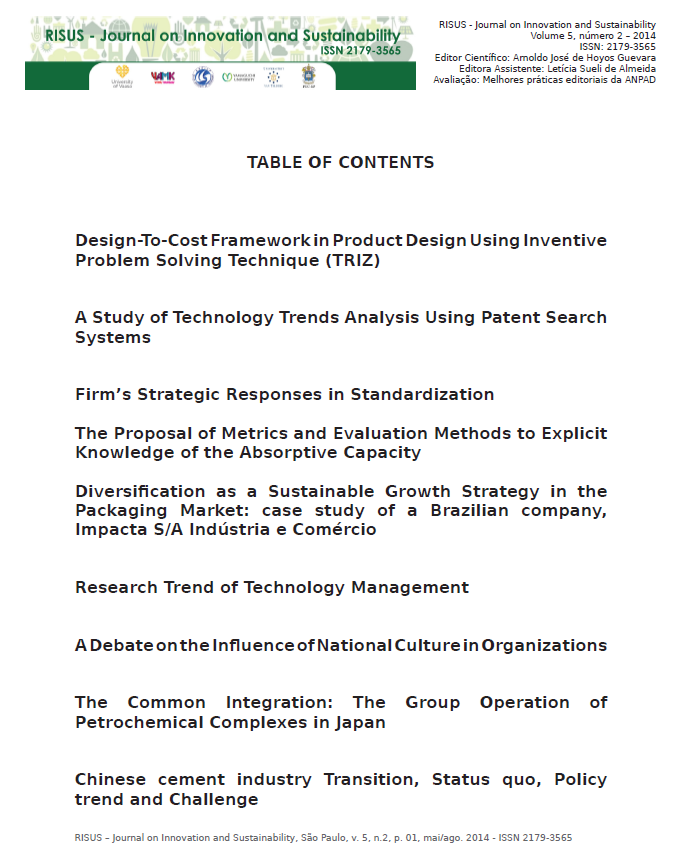Diversification as a Sustainable Growth Strategy in the Packaging Market: case study of a Brazilian company, Impacta S/A Indústria e Comércio
DOI:
https://doi.org/10.24212/2179-3565.2014v5i2p56-77Palavras-chave:
diversification, sustainability, business strategy.Resumo
The diversification strategy is one of the most preferred by companies that searchfor the sustainable growth of their sales and profits in markets where products appear, grow indemand and become mature in a progressively faster way. This process is strongly perceived in thepackaging product market, as packaging are means of product promotion, brand image buildingand product quality protection, currently more and more important for consumer products.This research aims to verify if the diversifying strategy is a suitable option for companies ofsuch segment. The verification is performed through a case study covering the diversificationsolution of Impacta S/A, traditional supplier of aluminum collapsible tubes in Brazil and LatinAmerica that added to its portfolio plastic tubes and aluminum monoblock aerosol cans. Theconclusion of this study is that such diversification reached its goals of generating sustainablegrowth, reduce business risk, obtain solid “Market Share” in Brazil for all its products, adequatelyre-position the company in the market and surpass the results achieved by its competitors inthe country. It was also possible to assess the perspective of continuity of the current strategyas a way to increase sales by 85% in US dollars in the next five years, confirming the goodquality of the company managers’ strategic choice.As this conclusion is in part limited by the fact that the study focused on a single case, asuggestion should be left recommending the analysis of other diversification cases of companiesin the packaging segments.Downloads
Publicado
Edição
Seção
Licença
Esta obra está licenciada sob uma licença Creative Commons Atribuição - No comercial - Sin derivaciones 4.0 Internacional
1.O(s) autor(es) autoriza(m) a publicação do artigo na revista;
2.O(s) autor(es) garante(m) que a contribuição é original e inédita e que não está em processo de avaliação em outra(s) revista(s);
3.A revista não se responsabiliza pelas opiniões, ideias e conceitos emitidos nos textos, por serem de inteira responsabilidade de seu(s) autor(es);
4.É reservado aos editores o direito de proceder ajustes textuais e de adequação do artigos às normas da publicação.
1.1 Copyright Statement
This journal is licensed under a Creative Commons Attribution-Non Commercial-No Derivers 4.0 International license.
1. The author (s) authorize the publication of the article in the journal;
2. The author (s) warrant that the contribution is original and unpublished and is not in the process of being evaluated in other journal (s);
3. The journal is not responsible for the opinions, ideas and concepts emitted in the texts, as they are the sole responsibility of its author (s);
4. The editors are entitled to make textual adjustments and to adapt the articles to the standards of publication.


